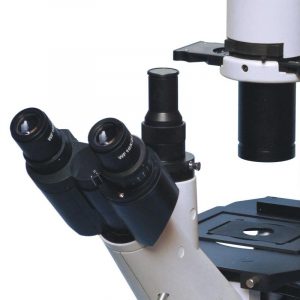Classification of objectives: Revealing key components of the microscopic world
The objective lens is one of the key components in the microscope, which determines the magnification and resolution of the microscope, thus affecting our observation and research in the microscopic world. This paper introduces the classification of objective lenses, including achromatic objective, flat field achromatic objective and infinite flat field achromatic objective, and discusses their functions and advantages in microscopy.

Achromatic objective:
An achromatic objective is an objective designed to correct for chromatic aberration. Chromatic aberration is an optical distortion that causes different wavelengths of light to focus on different focal planes, affecting the color and sharpness of the object being observed. Achromatic objectives correct for this chromatic aberration by using special lens combinations to provide more accurate colors and images. This allows the observer to see the true color of the object, rather than being disturbed by the color difference.
Classification of objectives: Revealing key components of the microscopic world
Flat field achromatic objective:
A flat-field achromatic objective is a further improved objective that corrects aberrations as well as chromatic aberrations. Aberration is an optical distortion due to the imperfect shape of a lens or refraction of light, which causes an image to differ in sharpness at the center and edge of the field of view. The flat-field achromatic objective corrects these problems by optimizing the lens shape and curvature, ensuring that the image remains consistently sharp across the entire field of view.
Infinite flat field achromatic objective:
Infinite flat field achromatic objective is a further improvement on the basis of flat field achromatic objective. It is designed to view samples at infinite distances, which is very useful in some microscopy applications. This objective lens provides a flat field of view, allowing the observer to maintain uniform clarity throughout the field of view, regardless of whether they are looking at a central object or an object at the edge of the field of view.
Classification of objectives: Revealing key components of the microscopic world
The importance of objective lens:
Objective lens is one of the core components of microscope, its design and quality directly affect the performance of microscope. High-quality objectives can provide higher magnification and better resolution, allowing scientists to observe and study tiny biological and material structures. Different types of objective lenses are suitable for different applications, and scientists choose the right type of objective lens according to the needs of the experiment.
In summary, the objective lens is a difficult or missing component of the microscope, which improves the performance of the microscope by correcting chromatic aberration and aberration, as well as providing a flat field of view. The different types and designs of objective lenses allow us to better explore and understand the mysteries of the microscopic world. The objective lens is a key component that reveals the beauty of the microscopic world.
